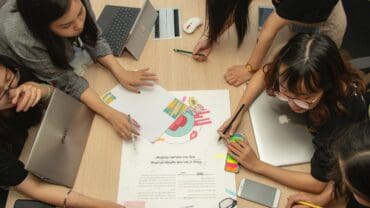
As there are several ways for humans to obtain knowledge, the number of teaching strategies continues to grow. As a result, there are a variety of approaches that make use of their specific abilities. Learning by doing is one such approach I'd like to share with you.
This method has been around for a long time, and it's surprisingly efficient due to the numerous benefits it provides. Also known as experiential learning, I'll be sharing my understanding of the subject, what it entails, and why it's such a powerful learning tool with you.
Learning by doing is based on the basic premise that we can learn more about something by doing it.
Let's imagine you want to learn to play a musical instrument and you're curious about how they all sound and blend. In most other methods, you'd be performing the instrument in a studio by yourself. Learning by doing, on the other hand, provides you with a fundamental grasp of how to play the instrument as well as the opportunity to perform an improvised composition with other musicians on stage.
Another way to think about it is to approach something more actively rather than passively learning about it. The notion is that active participation leads to deeper learning, and that making errors is fine as long as you learn from them. This mindset gave birth to a new moniker for this method: experiential learning.
Experimental learning has existed for millennia. "For the things we have to learn before we can do them, we learn by doing them," wrote Aristotle.
That style of thinking evolved and altered through time, and was eventually lost once computers were brought into classrooms. It's only in the last few years that schools have reintroduced this strategy. It's easy to see why instructors support this since it has five major advantages.
The first advantage is that it is more remembered and interesting. You won't be able to diminish your performance because this involves action on your side. This is significant because, in the past, you would learn via lectures, books, or articles, and students could simply read—or not read—the content and walk away with little information.
It's easier to remember things when you're placed into a scenario where you have to do what you need to learn. Every activity gives unique learning opportunities, and it is here that motivation is developed. That drive is based on what you've learnt and experienced. It instils in students the belief that learning is relevant and worthwhile.
In addition, this experience allows learners to go through the learning cycle, which includes extended effort, mistakes, and reflection, followed by strategy refinement.
Learning through doing, for the reasons stated above, provides a personal experience. Returning to the effort, mistakes, reflection, and refinement cycle, it is only feasible to complete this cycle through personal emotions—the motivation and realisation of knowledge of a certain issue that is aligned with your beliefs and ideals.
This link is strong, and it provides a fuller experience than reading from a book or an article like this one. That personal connection is even more significant since it inspires learners to explore and be curious.
You may study up on it or watch a video if you've always wanted to make a cake or prepare a distinctive cuisine. You may also acquire the ingredients and go through it all on your own. Even if you make mistakes right now, you'll know what to do the next time you try it out. You're also more invested in it since it's food you prepared with the aim of eating it.
Rather than sitting alone in your home or a library, learning by doing engages the entire world. Because the entire city serves as your classroom, you may take use of a variety of resources. Local assets and partners can be gathered, and local challenges can be linked to bigger global themes.
This emphasises the personal element that this strategy promotes. You're a member of a community, and this type of learning helps you to engage and connect with it more—not necessarily with the people who live there, but certainly with the environment.
This type of education is also strongly ingrained in our daily lives. Deep learning happens best when students can apply what they've learned in the classroom to questions that are important to them.
Despite the abundance of information available, individuals continue to question, "What's in it for me?" People will be more engaged in learning if they believe that what they are learning is relevant to their way of life in some manner. If they can't connect their information to personal experiences, it'll be forgotten. As a result, experience learning simplifies the application of information.
The final advantage of learning by doing is that it improves your ability to succeed. Learning by doing motivates you to push yourself out of your comfort zone, attempt new things, and try things for the first time. You're sure to make a few mistakes, but this method doesn't hold it against you.
As a result, learning by doing may help you increase your curiosity for new things as well as your commitment to professional growth and development. This might also contribute to the development of team management and cooperation skills. These are all critical aspects of personal development as we go forward.
Leave a comment